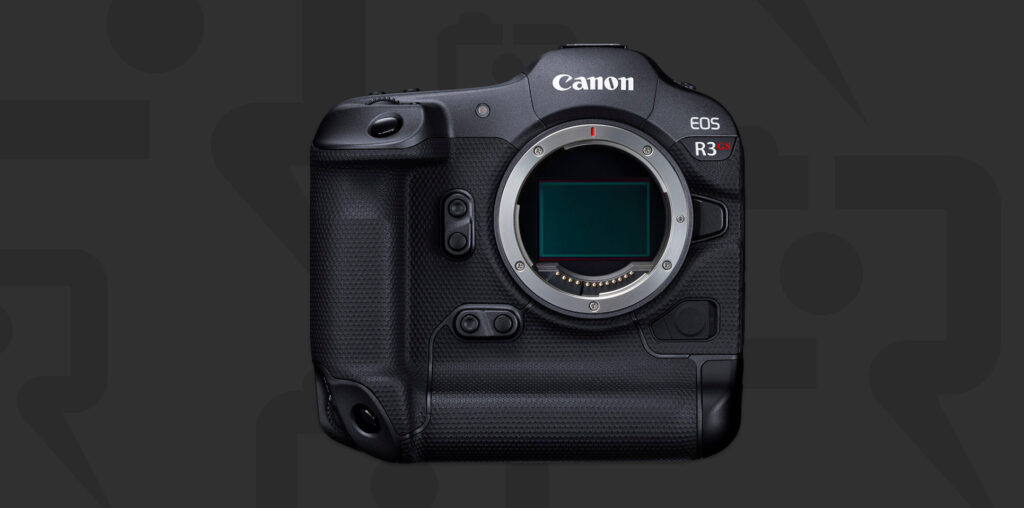Canon, when they have bothered to say much about the subject have always stated that they wanted image quality to improve from model to model on their cameras.
Even though Canon’s definition of image quality at times was a bit suspect (for example JPEG-only output, etc), for the most part, they have held to that, with minor variations (for instance the R5 Mark II being slightly worse than the R5).
Speed also has an impact on image quality, from being able to capture movement without any distortion, to panning without any rolling shutter distortion. The faster the sensor is, the better.
In early 2024, Sony delivered the Global Shutter based A9 III, and it took a while but the results from DXO are in. I didn’t really expect much better from the A9 III (though it wasn’t the first full frame global shutter sensor – it was though the first full frame global shutter camera).
In the ultimate need for speed, the A9 III certainly delivers but there’s a cost and that’s across the board image quality and the base ISO.
If we look at the DXO results, we see that the A9 III scores low on both colour reproduction and also dynamic range. It should also be noted that the A9 III has a base ISO of 250.
| Model | Overall score | Color Reproduction | Dynamic Range | High sensitivity |
| α9 III | 87 | 24.1 | 13 | 3224 |
| α9 II | 93 | 25 | 14 | 3434 |
| α1 | 98 | 25.9 | 14.5 | 3163 |
| α7 IV | 97 | 25.4 | 14.7 | 3379 |
| EOS R3 | 96 | 25 | 14.7 | 4086 |
| Z9 | 98 | 26.3 | 14.4 | 2451 |
The high ISO results more or less catch up because at higher ISO’s the A9 III deficiencies are no longer important.
So what we have is a very narrow focused camera, more so than what people are suggesting for the R1 amusingly.
While I think the R3 Mark II would be a perfect choice, a few things are standing in the way.
The Nomenclature
When Canon implemented a pellicle mirror on the EOS-1N they specifically came out with a “RS” model (EOS-1N RS) that made it clear that this model was different and make sure you are aware of the differences before you purchase. Much like the 5D Mark III and the 5Ds and 5DsR naming conventions.
I know this is semantics, but it’s basically… Canon wouldn’t do the same tomfoolery that Sony has done.
I could see Canon releasing a R3 GS and the R3 line shifts from the R3 to a R3 GS, with a lineage progression from that model onward. Then there is less consumer confusion over what exactly you are purchasing. But my guess is that if Canon does use the R3 as a Global shutter introduction, it won’t be an R3 Mark II.
The Sensor Performance
But would Canon do this at all? The drop in image quality is high from the R3 to the R3 with a similar global shutter to that in the A9 III. Not to mention removing ISO 100 up to 250 removes a lot of utility that the camera may have outside of high ISO fast movement and action shooting.
This is something that traditionally Canon is very averse to doing, especially the amount of dynamic range, and color fidelity that we are talking about here. So, if Canon implements a Global Shutter, I think they will work on the problems that Sony for some puzzling reason decided not to.
From Canon (2024)
There are negative points and the image quality is affected. Sensitivity management is not very good and the dynamic range is less extensive. And I think we would have difficulty optimizing this, because of the very complex structure of this type of sensor.
If we have to integrate this into our flagship product, our flagship , we want to have complete technology. Philosophy.
https://www.canonrumors.com/canon-executive-interview-at-cp-2024/
Sony Electronics *does* have better performing global shutter technology, but that was not used in the A9 III. Perhaps cost was a factor, but with the Sony A9 III getting a $1500 price hike for “something” – you’d think that would cover increased fabrication complexity costs. And since they didn’t go all out, there’s hardly any fabrication difference between a normal stacked sensor to this global shutter sensor (so don’t ask me what Sony users are paying an extra $1500 for).
I would assume that Canon’s global shutter sensor will be far more expensive than Sony’s because they will work on image quality versus marketing messages.
That also may cause Canon to take a considerable amount of time to come out with such a camera.
Global Shutter Sensors are the Future
Just because Sony was the first to put it in a camera, really is a little meaningless, Global Shutter sensors have been here a while, but it’s optimally performing sensors that’s what the industry really needs.
I do like the benefits of Global Shutter and I think Canon (or Sony) will decide to implement fabrication methods that lower the image quality loss and improve the costs of these sensors.
Once this happens en mass, then we’ll see an industry adaptation to sensors and cameras with absolutely no mechanical “bits” outside IBIS as the rest of the internal guts will be all electronic.
Normal sensors with mechanical shutters will disappear as “yesterday’s technology” much like DSLRs did in the past.
I’m all for that happening sooner than later.
|
When you purchase through links on our site, we may earn an affiliate commission. Here’s how it works. |

